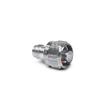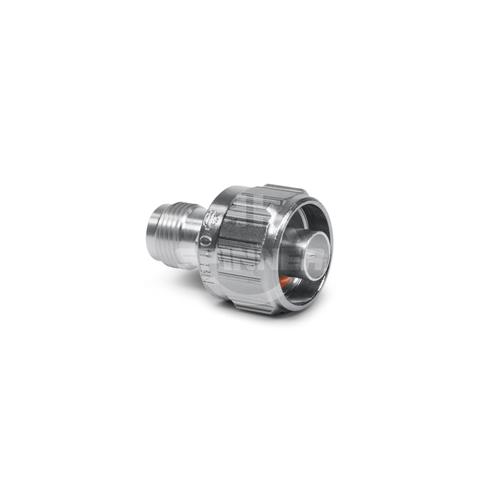SPINNER adapters offer outstanding electrical and mechanical properties
Adapters are used to connect transmission lines with different interface sizes (so-called inter-type or between-lines adapter) or within one size but different interface genders (so-called within-type or in-line adapter).
SPINNER high frequency adapters are optimized for quality and performance and are designed for the lowest possible reflection factors. The outstanding electrical and mechanical properties, the simple installation and the high reliability make SPINNER high-frequency adapters one of the most efficient and cost-effective transition connectors on the market. Precision adaptors with RF quality grade 0 are available upon request.
The SPINNER N male to TNC female adapter guarantees excellent, lossless mobile communication quality for use in in-building distributed antenna systems (DAS) or on mobile communication base stations outdoors.
Outstanding RF characteristics, best possible passive intermodulation and VSWR
A N male to TNC female adapter enables you to reliably transmit radio-frequency signals in the frequency range from DC to 11 GHz.
The adaptor offers a transition from interface N male to interface TNC female. The connector has a straight direction.
The N-coaxial connectors were named after their inventor Paul Neill, who developed this standard for RF connectors in 1942. Often, however, the name also relates to the Navy Connector. Type N connectors can be used at frequencies up to 11 GHz, high-precision types up to 18 GHz. It is typically used in mobile communication applications with demanding mechanical and electrical requirements. SPINNER exclusively manufactures connectors with non-slotted outer conductor contacts and a special sealing profile in the connector head instead of the flat seal disk, specified by IEC or CECC. This ensures the most reliable sealing function.
The term TNC connector is derived from the English term Threaded Neill Concelman. They are defined by a thread instead of a bayonet (as with the BNC connector) and the initial letter of the names of the developers Paul Neill and Carl Concelman. They created this standard in the late 1950s as an alternative to BNC connectors. The coaxial connectors are suitable for radio frequency signals up to about 11 GHz. The mechanically stable screw connection enables better electrical properties in environments with strong vibration, such as vehicles.



